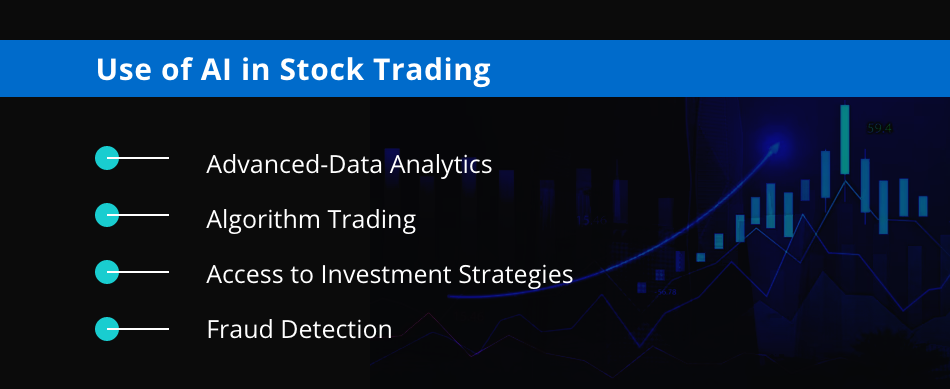20 Free Tips On Deciding On AI Stock Picker Platform Sites
20 Free Tips On Deciding On AI Stock Picker Platform Sites
Blog Article
Top 10 Tips For Pricing And Costing Of Ai Stock Predicting Trading Platforms
Assessing the cost and pricing of AI analysis and stock prediction platforms is crucial to ensure you are getting the most value from your investment while avoiding hidden fees or unanticipated expenses. Prices vary widely, so it's important to know the value you get for your money. Here are the top 10 tips for evaluating pricing and cost.
1. Understanding Pricing Model
Subscription: Make sure you check if a platform charges an amount per year or month and what's included in each level.
Pay-per-use: Determine whether the amount you pay for is according to the use of the platform (e.g. the number of transactions or requests for data).
Freemium model: Check whether the platform has an unpaid tier that has only a few features, and charges for premium features.
2. Compare Pricing Tiers
Compare features in each pricing level (e.g. basic, professional).
Scalability: Ensure that the pricing tiers align with your needs, whether you're an individual trader, professional, or an institutional member.
Upgrade flexibility: Find out if you are able to effortlessly upgrade or downgrade as your needs evolve.
3. Evaluate Hidden Costs
Data charges. Verify that the platform charges a fee to access premium data.
Brokerage fees: Check if there are any extra charges associated with the platform to connect with brokers or trades.
API usage: Check if there are extra costs for API access or for high-frequency API use.
4. Check out free demos as well as trials
Trial period: Try platforms that give you a no-cost trial or demo to test their features.
Check the limitations on the trial version for free. It might not contain all of its features.
Option of no-commitment: Make sure you can cancel your trial at any time if it doesn't fit your needs.
5. Look for discounts and promotions.
Discounts on annual subscriptions Comparing the monthly plan to an annual subscription.
Referral Programs: Find out whether your platform provides discounts or credit to customers who refer other users.
Prices for bulk or institutional: If your organization is large, you may want to ask about bulk and institutional pricing.
6. Calculate Return on Investment
Cost vs. value: Determine if the platform's features and predictions justify its cost. Do you have time saved or make better choices when trading?
Research the platform's success rate or user testimonials to assess its potential return on investment.
Alternative costs: comparing the cost of the platform to the cost that might be incurred if it is not used (e.g. missed opportunities, manual data analysis time).
Examine the Cancellation Policy as well as the Refund Policy
Cancellation Terms: You may cancel your subscription without any hidden fees or penalties.
Find out if there's an option to refund subscriptions you've not used.
Auto-renewal Check to find out whether your subscription renews automatically and find out how you can opt out.
8. Review Transparency of Pricing
A clear pricing page Make sure whether the website has a pricing page which is detailed, clear, and does not include any hidden fees.
Customer support: Contact customer service to clarify any pricing or cost issues.
Contract Terms: Read the contract terms to determine if there are any penalties or long-term obligations.
9. Compare your competitors
Comparing the features and costs of different platforms is an excellent way to ensure that you're getting a fair price.
User reviews: Read feedback from users and see what other users think about it's worth the effort.
Market positioning: Look at the prices and determine if you are getting a platform that is in line with your expectations.
10. Calculate Long-Term Costs
Price increases: Find out if and how often the platform raises its prices.
Features added: Determine if new features are included in your current plan or require an upgrade.
Costs of scaling: Make sure the pricing of your platform is reasonable when your trading or data requirements increase.
Bonus Tips
Test multiple platforms. You can test multiple platforms for free, and then evaluate them.
Price negotiation: If you are an institution or you are a frequent user, you should consider seeking out discounts or custom pricing.
Find educational resources on the internet There are some platforms that offer free educational tools or resources that add value over the core features of their platform.
The following tips can help you evaluate the pricing and costs of AI software for predicting and analyzing stocks. It is possible to choose one that suits your budget and provides the features you require. A well-balanced platform will offer you the best of both worlds in terms of affordability and functional. Read the most popular the advantage for ai investing for more advice including chart ai trading assistant, options ai, trading with ai, chatgpt copyright, trading with ai, using ai to trade stocks, best ai trading app, ai trading tools, ai for investment, ai trading tools and more.
Top 10 Tips To Evaluate The Risk Management Of Ai Stock Forecasting/Analyzing Trading Platforms
Risk management is a vital element of any AI trading platform that predicts or analyzes stocks, as it helps protect your capital and reduce the risk of losses. Platforms with robust risk management features will help you navigate the market volatility and make an decisions based on information. Here are 10 top strategies to help you evaluate the risk management capabilities of these platforms.
1. Examine Stop-Loss and Take Profit Features
Customizable levels - Make sure that the platform lets you modify your stop-loss, take-profit and profit levels for every trade or strategy.
Check the platform to see whether it is compatible with trailing stopped, which will adjust automatically when the market moves your way.
Stop-loss guarantee: Check to find out if the platform offers stop-loss guarantees, which will guarantee that your account will be closed at a specified price, even in volatile markets.
2. Calculate the Size of Position Tools
Fixed amount: Check that the platform you're using permits you to set position sizes according to a predetermined amount.
Percentage of Portfolio: Decide whether it is possible to establish the size of your position as a percent of your total portfolio so that you can manage risk proportionally.
Risk-reward-ratio: Determine if the platform permits users to determine their own risk/reward ratios.
3. Check for Diversification Support
Multi-assets trading: Make sure that the platform is able to support trading across multiple asset categories (e.g. ETFs, stocks, options, forex and more.) for diversification of your portfolios.
Sector allocation: Check whether the platform has tools to monitor and manage the exposure of sectors.
Diversification of the geographic area. Check to see the platform you use allows you to trade on international markets. This can aid in spreading the risk across different geographic areas.
4. Review leverage control and margins.
Margin requirements. Be sure to know the margin requirements before trading.
Be sure to check for limitations on leverage. You can use this feature to limit your risk exposure.
Margin call - Check to see if your service alerts you to margin calls promptly. This will prevent liquidation.
5. Assessment and Reporting of Risk
Risk metrics: Be sure the platform offers important risk indicators for your portfolio (e.g. Value at Risk (VaR), sharpe ratio, and drawdown).
Scenario analysis: Find out if the platform allows you to model various market scenarios in order to evaluate possible risks.
Performance reports: Determine whether you can obtain detailed performance reports through the platform, including risk-adjusted performance results.
6. Check for Real-Time Risk Monitoring
Monitoring your portfolio: Make sure the platform offers real-time monitoring of the risk exposure to your portfolio.
Alerts: See if you receive real-time alerts for events that are associated with risk (e.g. Stop-loss triggers, margin breaches).
Risk dashboards - Check to see if your system comes with customized risk dashboards. This will give you more information about the risks that you face.
7. How can you assess the results of Stress Testing and Backtesting
Stress testing. Make sure your platform permits you to stress test the strategy or portfolio under extreme market circumstances.
Backtesting: Determine if the platform supports backtesting strategies with historical data to assess performance and risk.
Monte Carlo Simulators: Verify whether the platform uses Monte Carlo models to model possible outcomes and evaluate risks.
8. Risk Management Regulations: Assess the compliance
Compliance with regulatory requirements: Make sure the platform is compliant with applicable rules for risk management (e.g., MiFID II in Europe, Reg T in the U.S.).
Best execution : Examine to determine if your platform is following best execution procedures. This guarantees that trades are executed for the best possible price, minimizing the chance of slippage.
Transparency - Check to see if the platform discloses the risks in a clear and open and transparent manner.
9. Verify that the parameters are controlled by the user.
Custom risk rules - Be sure the platform permits for you to define your own risk management rules.
Automated Risk Controls Determine if the platform is able to automatically enforce risk management guidelines based on predefined parameters.
Verify if the platform allows manual overrides to automated risk controls.
Review of User Feedback and Case Studies
User feedback: Read user reviews to assess the platform's capability to manage the risk.
Testimonials and case studies: These will highlight the platform’s risk management capabilities.
Community forums - Look to see if the platform offers a user community which is active and where traders can share their strategies for managing risk.
Bonus Tips
Trial period: You may make use of a demo or a no-cost trial to test out the risk management features on the platform.
Support for customers: Ensure that you have a reliable support system for risk management-related problems or queries.
Find educational resources.
Follow these tips to assess the risk-management capabilities of AI trading platforms that can predict or analyze the prices of stocks. Choose a platform with a high quality of risk-management and you will minimize your losses. It is vital to utilize effective risk-management tools in order to successfully navigate market volatility. Check out the recommended ai copyright signals hints for blog examples including ai stock investing, ai software stocks, ai trading tool, best ai trading platform, chart ai trading, ai stock price prediction, ai tools for trading, ai stock analysis, ai stock analysis, free ai tool for stock market india and more.